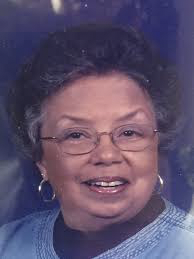Emily Dyer (j. 10/1069; d. 2021) was a delightful conversationalist who was in church most Sundays and always full of joy, humor, and insight. She cared about the congregation and wasn’t willing to accept shortcuts or doing things halfway; she was determined to make sure that things were done in the way they were supposed to be done. Everyone who’s been in a meeting with her saw it and felt her commitment to doing things the right way.
She was a longtime member of Silver Souls and a past Board vice president (1976). As a retired museum professional, Emily was also a much-in-demand volunteer with our Archives, the Hiroshima Children’s Drawings Committee, and many church projects, including the Silver Souls’ 2007 exhibit, “The Ministers’ Journey Toward Social Justice, 1821-Present.”
She had a long, rewarding museum career and had special skills not only in the organization and care of collections, but also in the complex processes involved in beginning a new institution. She joined the curatorial staff at the United States Holocaust Memorial Museum in 1989, where she was the museum registrar and collections manager, with responsibility for the treatment, rotation and display of museum artifacts, after having previously served as the head registrar at the Smithsonian’s Arthur M. Sackler Gallery. Prior to that, she had been a manager of the Smithsonian Institution Traveling Exhibition Service (SITES), the world’s largest traveling exhibition service, and had directed Fine Arts Services within the Library of Congress and at both the Afro American Museum in Philadelphia (formerly the Afro-American Historical and Cultural Museum) and the United States Information Agency.
Dyer felt a calling about her work at the Holocaust Museum despite the disturbing personal artifacts of Holocaust victims and other reminders of the horrors of the Holocaust. When interviewed by the Baltimore Sun in 1998, she said she once considered leaving the museum to work on a Smithsonian exhibit on slavery, which was a subject of profound interest of hers. But she realized that the Holocaust Museum spoke as eloquently as any museum could to the universal subjects of hatred and racism. “I used to dream of being in the crematorium,” she says. “Interestingly, I never dreamed of being lynched as you would think a black would.”

